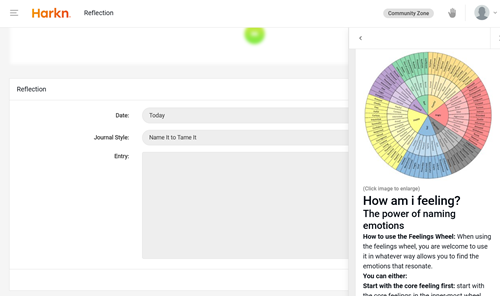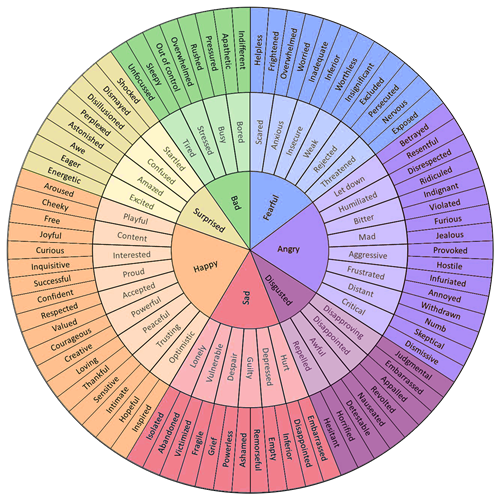"Although many of us think of ourselves as thinking creatures that feel, biologically, we are feeling creatures that think."
Jill Bolte Taylor
We all have emotions, and whether we are aware of it or not, they rule our moods, behaviour, decisions, and actions. Building skills to manage our emotions is the key to success in every area of our lives.
Asking ourselves how we feel isn't something that many people do regularly, and at first, it can feel a little unusual. But when we ignore our emotions, each time we push them aside, they become like balloons that keep filling with air until they burst.
There is a lot of power in naming our emotions, especially when something is upsetting us. By taking a minute to reflect on and label our emotions, we create distance between ourselves and our experience, allowing us to take a step back and choose how to respond, reducing the force they have on our minds and our lives.
Below is a simple daily check-in routine that has been a game-changer for me. It takes just a few minutes as part of my morning routine, and I have found it to be a powerful tool to steady myself on difficult days and help maintain good days when I’m feeling great.
Name it to Tame it: A simple but effective journalling technique
This exercise I'm talking about is called “Name it to Tame it.” It is a simple, science-backed technique you can use to calm spiralling negative thoughts or intense emotions and feel less overwhelmed.
This technique was first identified by Dr. Daniel Siegel, a psychiatrist, author, professor, and founding co-director of the Mindful Awareness Research Center at UCLA.
It's one of 10 different journalling prompts we use in Harkn to help employees to make sense of how they're feeling, encouraging better wellbeing.
Below is a short daily practice that you can use to help ground and balance your emotions, especially when you are struggling or having a difficult day.
Name it to Tame it daily practice (3-5 minutes):

Each day I rate how I'm feeling in Harkn from 1 - 100. Then I ask myself the following three questions:
1. What are my dominant emotions today?
For this question, I always use the feelings wheel. It is an incredibly helpful tool to help you identify how you feel. See more guidance on this below.
What emotions from the feelings wheel resonate with you today?
2. Why am I feeling this way?
What is going on for you personally or professionally that is influencing your emotions?
3. What do I need today to improve or build on how I'm feeling?
What actions would help you today? Taking a walk at lunch? Speaking to a colleague? Discussing an issue with your line manager? Working out or taking some meditation breaks?
You can look back at 'My Tracker' in Harkn whenever you like. It acts as a personal dashboard, letting you see all your journal entries and daily ratings to help make sense of your feelings over time.
How to use the feelings wheel

The feelings wheel was originally developed by Dr. Gloria Wilcox in 1982 and has been widely used ever since.
You can use the feelings wheel in whatever way works best for you.
You could either:
1. Start with the inner-most part of the wheel: Begin with the core feelings in the inner-most part of the wheel and then move outwards, moving from the core feelings to any associated feelings you might relate to.
2. Start on the outside of the wheel: This is my preference. If a core emotion is not clear, you can move from the outside in, identifying the associated feeling first and then making your way towards the core emotion. At each stage, notice which words resonate with you.
When I'm answering question 1 – what are my dominant emotions today? – I note down 1-3 of the associated feelings from the outside of the wheel.
Typically, you might find that two or even four different emotions apply. Don't worry too much about whether it's a core or associated emotion; just write down everything you feel.
Make Name it to Tame it your new daily habit
Making sense of how you feel and why you feel that way can have a powerful impact on both your professional and personal life.
Use the reflections tool in your Harkn Tracker or follow the guidance above to build up your emotional resilience and improve your wellbeing.
Find out more about Harkn for journalling here.





